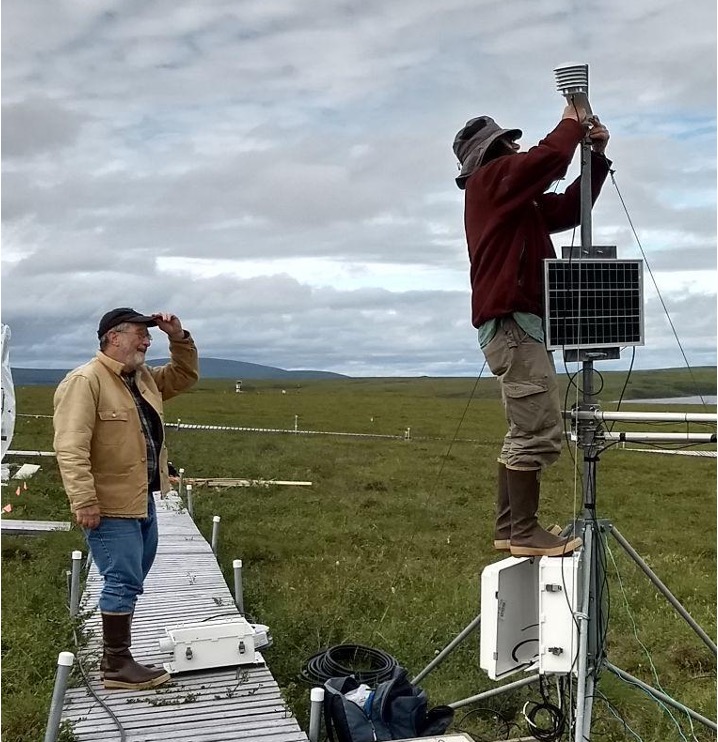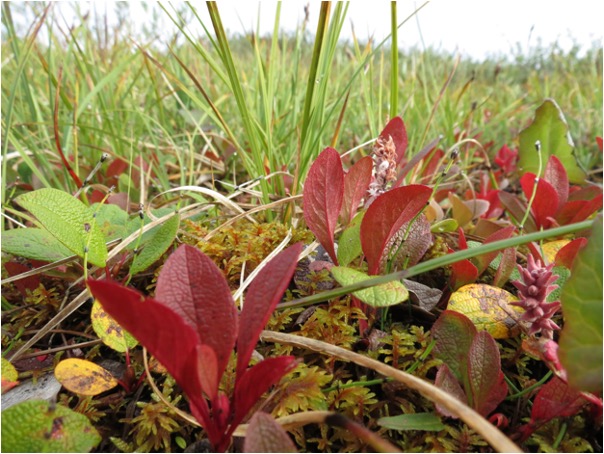The activities are as follows:
- Teacher Guide
- Student activity, Graph Type A, Level 3
- Student activity, Graph Type B, Level 3
- Student activity, Graph Type C, Level 3
- PowerPoint of images
- Grading Rubric
The Arctic, the northernmost region of our planet, is home to a unique biome known as tundra. While you might think of the arctic tundra as a blanket of snow and polar bears, this vast landscape supports a diversity of unique plant and animal species. The tundra is an area without trees that supports many species of plants, mammals, birds, insects, and microbes.
Arctic environments present many challenges to plants. Temperatures only creep above freezing for about three months each year. This short arctic summer means that the species that live there only have a brief period to grow and reproduce. From mid-May to the end of July the sun doesn’t set, so there’s plenty of light available. Plants need this light for photosynthesis to make sugars for food.
Even when there is light, plants need to wait until the snow has melted and the soil has thawed enough for them to grow. Tundra plants have short roots since they can’t grow through frozen ground. These roots try to get nutrients the plant needs from the soil. But with the soil so cold, decomposition is very slow. This means that microbes cannot easily convert dead plant material into nutrients that plants need such as nitrogen and phosphorus. For this reason, the growth of tundra plants is usually limited by nutrients.
Climate change is altering the arctic environment. With warmer seasons and fewer days with snow covering the ground, soils are thawing more deeply and becoming more nutrient-rich. With more nutrients available, some plant species may be able to outcompete other species by growing taller and making more leaves than other plant species. This means that climate change may alter the whole ecosystem game in the tundra. Instead of nutrients limiting plant growth, it may shift to a game of competition between plants reaching for light.

To simulate the environmental conditions, we can look at long-term data from two scientists, Gus and Terry, who started working at the Toolik Field Station in northern Alaska in the 1970s. They conducted a series of experiments and learned that two nutrients, nitrogen and phosphorus, limited plant growth in the tundra. Then, in 1981, they set up a new experiment where they added both nutrients to experimental plots every year. Gus and Terry compared plant growth between these fertilized plots and control plots that were not fertilized. They wanted to figure out how each plant species would respond to more nutrients over the long term and what would happen to the plant community to see if some species would outcompete others in the fertilized conditions. This experiment is one way to mimic future conditions and test hypotheses about what we might expect to see.
The fertilizer was added every year in early June after the snow melted off the plots. Beginning in 1983, other scientists, such as Laura and Ruby, began to sample these plots. They dug out small 20-centimeter by 20-centimeter samples of tundra and brought them back to the nearby Toolik Field Station. In the lab, the tundra sample was separated into individual plant species and “plucked” to sort by different plant tissue types: leaves, stems, and roots. Then these plants were dried and weighed to determine the biomass (mass of living tissue) of each species in the sample. The fertilized and non-fertilized plots were sampled and plucked six times between 1983 and 2015. This means that many of the scientists who sampled the plots in 2015 had not yet been born when the experiment started in 1981!
Featured scientists: Gus Shaver (he/him), Jim Laundre (he/him), Laura Gough (she/her), and Ruby An (she/her) from Toolik Field Station, Arctic Long-term Ecological Research Site
Flesch–Kincaid Reading Grade Level = 8.6
Additional teacher resources related to this Data Nugget:
- These data were collected from the Toolik Field Station, home of the Arctic Long-Term Ecological Research site. The full dataset is available online.

